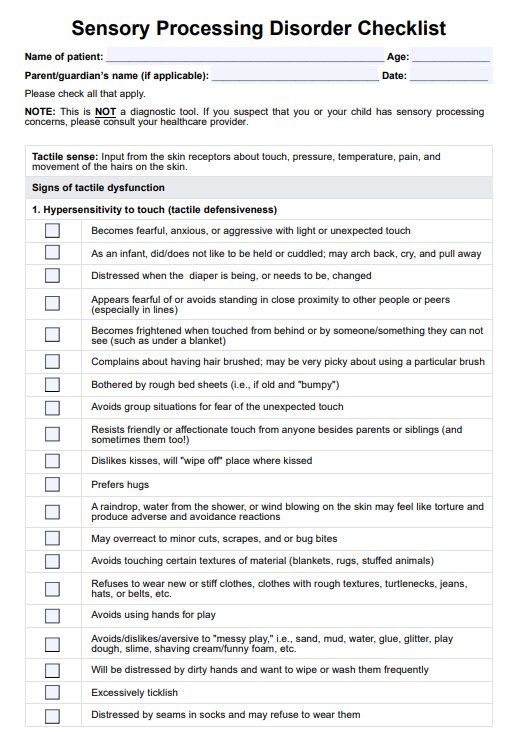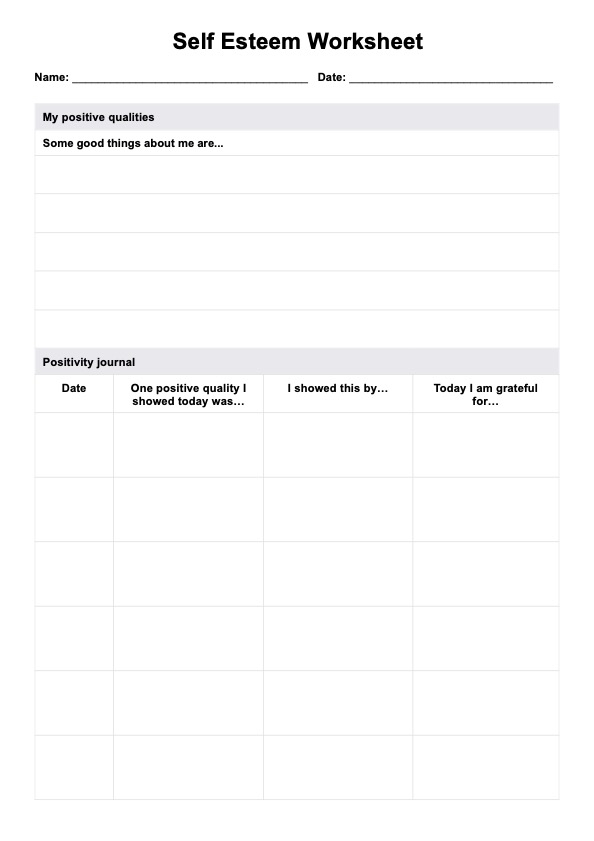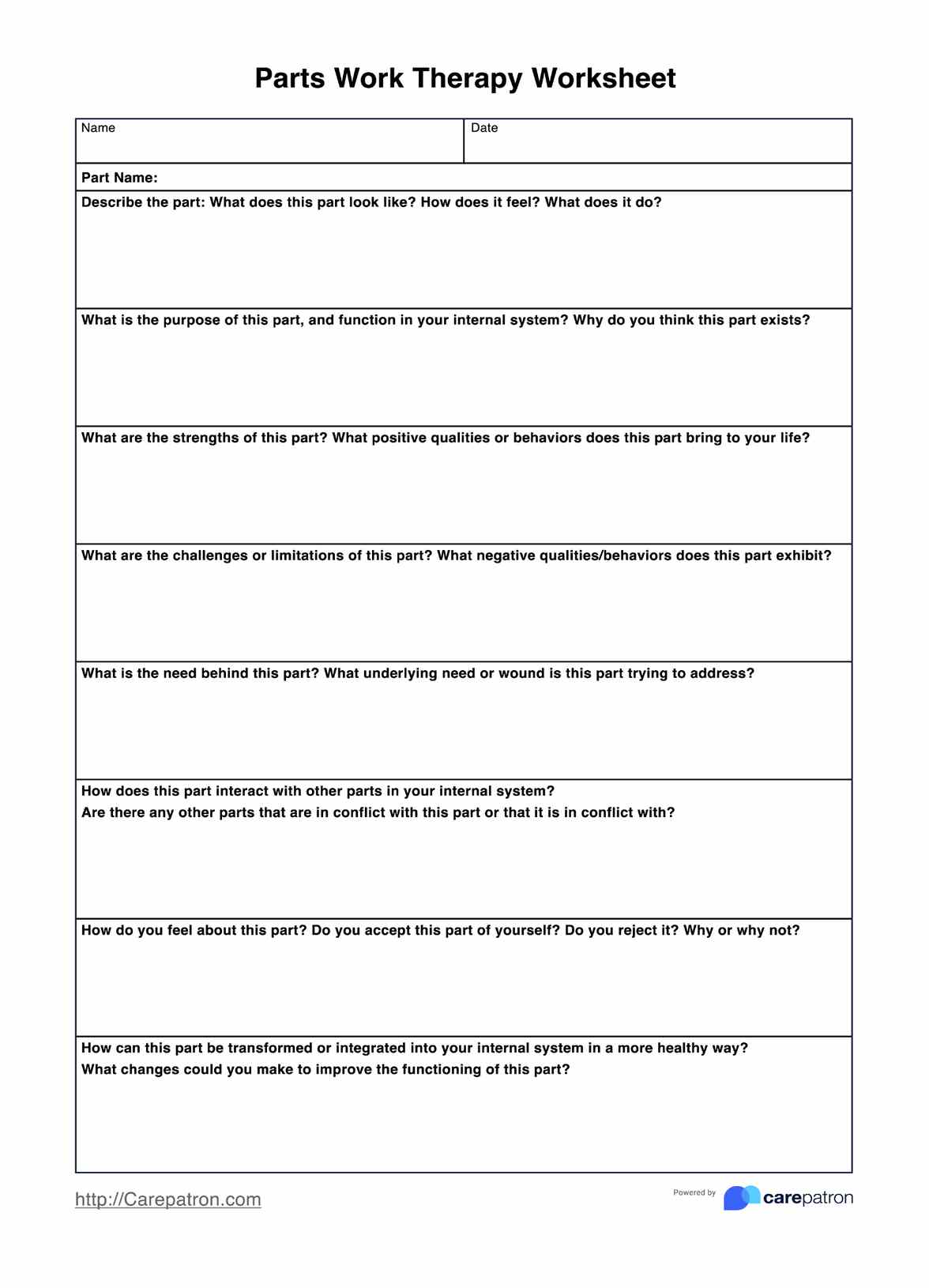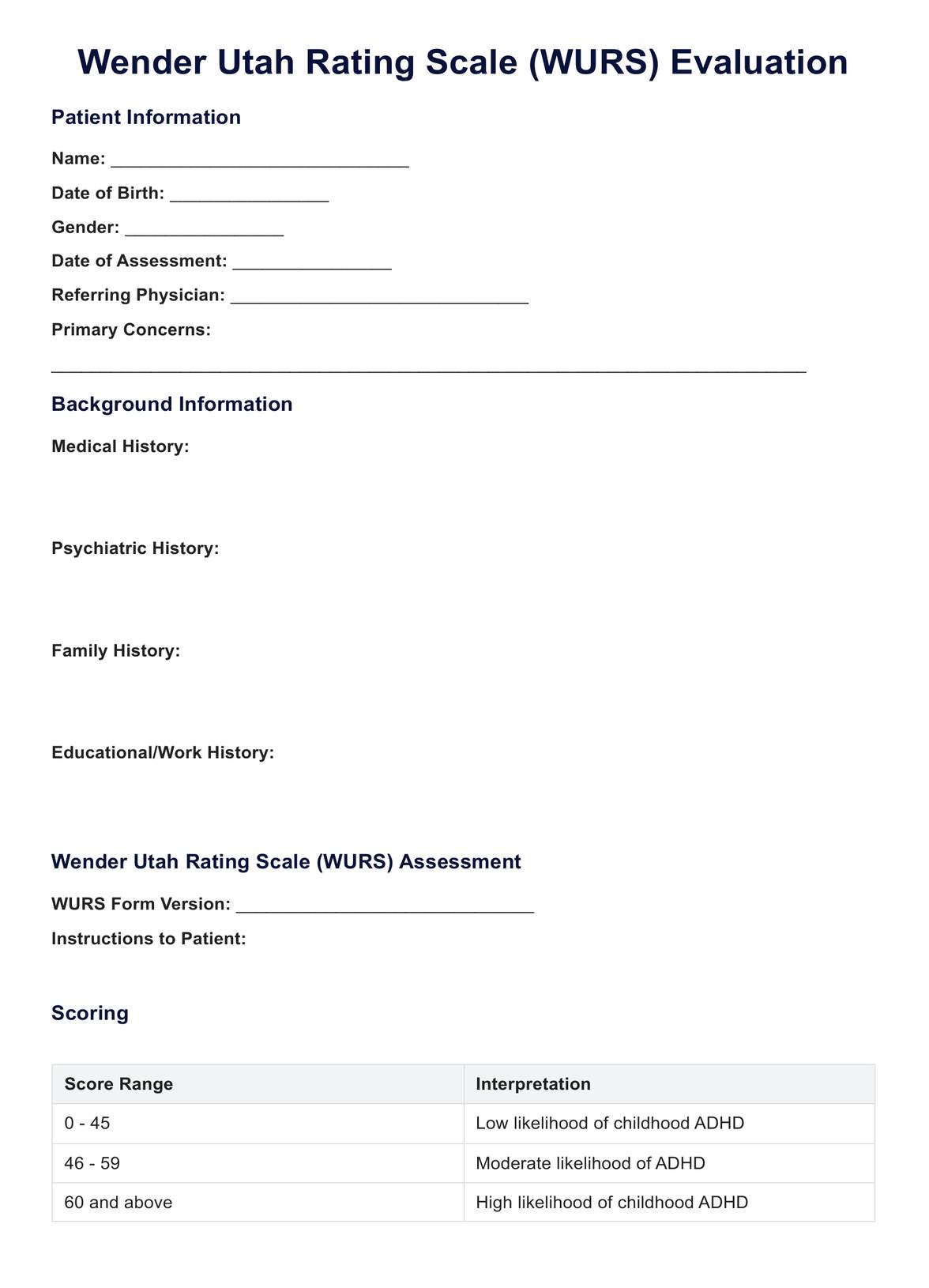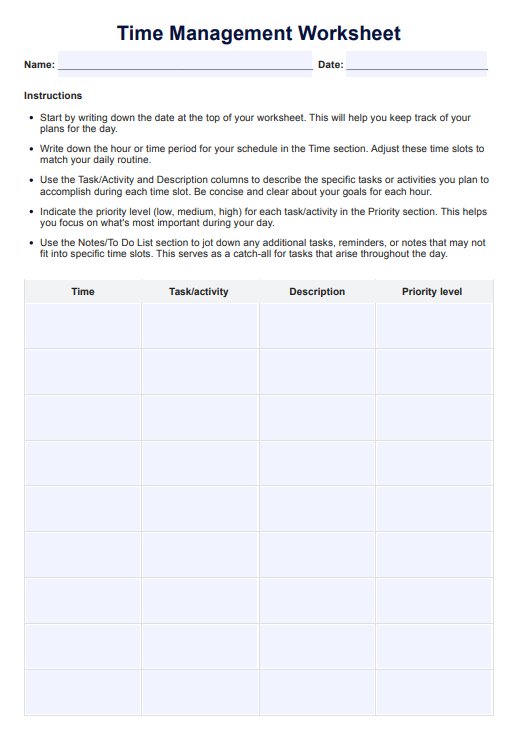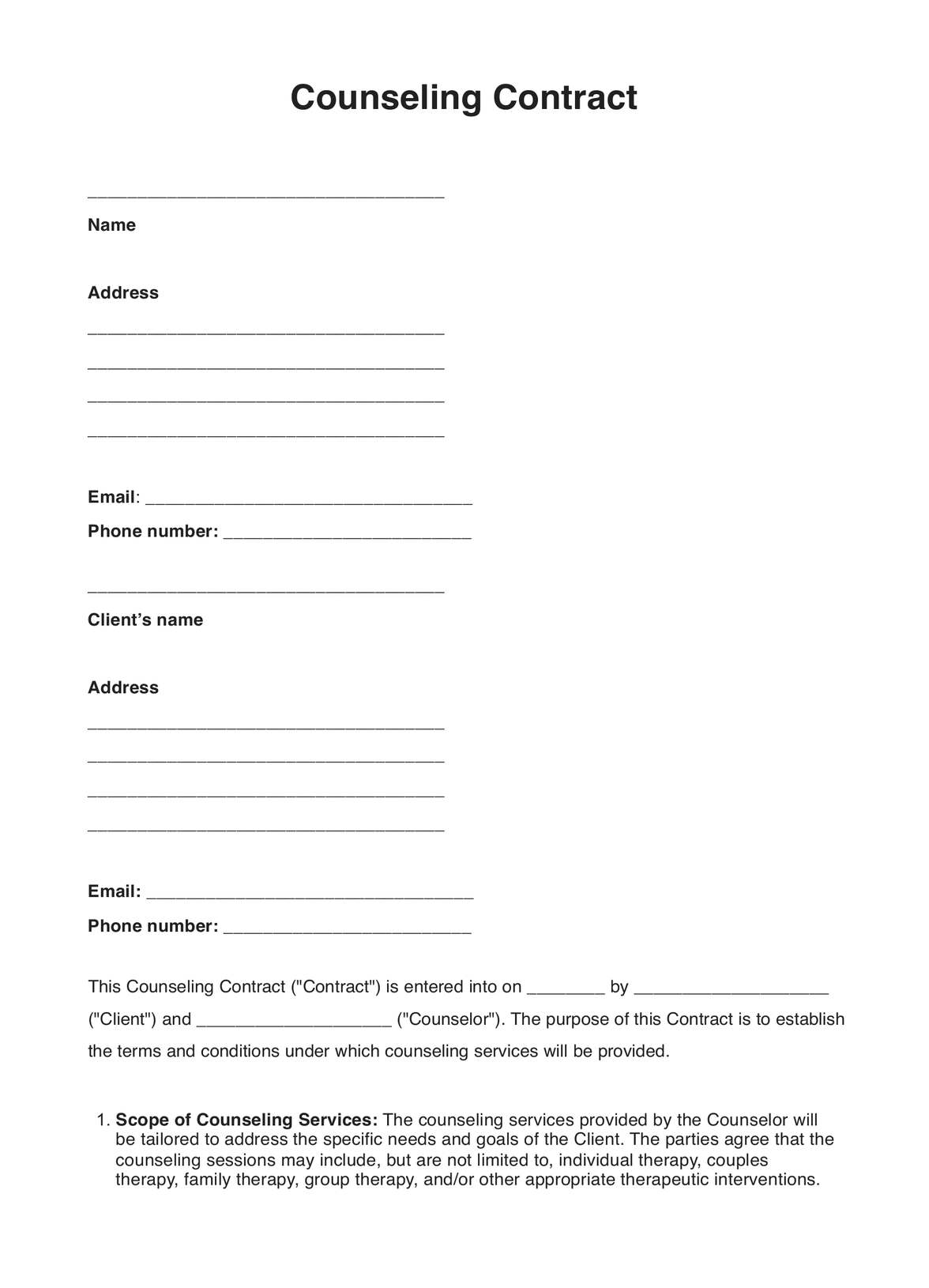Emotions Template
Enhance mental well-being with our Emotions Template for healthcare, fostering emotional resilience and support. Tailored solutions for comprehensive emotional health.


What is an Emotions Template?
The Emotions Template is a revolutionary resource designed to empower healthcare practitioners to provide holistic and compassionate care. Crafted with precision and empathy, this template serves as a versatile tool, seamlessly integrating emotional well-being into patient care.
The Emotions Template stands out as a beacon of support in a profession where every interaction matters. It offers a structured framework for practitioners to navigate and address the intricate landscape of patient emotions. From joy to sorrow, elation to anxiety, our template ensures that healthcare providers are well-equipped to comprehend and respond to the nuanced emotional needs of their patients.
This comprehensive resource is a testament to our commitment to enhancing the human connection within healthcare. It does not just acknowledge emotions; it celebrates them as vital components of the healing process. By utilizing the Emotions Template, practitioners can foster an environment where patients feel seen, heard, and truly understood.
Picture a healthcare experience where empathy flows seamlessly alongside medical expertise. With the Emotions Template, that vision becomes a reality. It is a tool and a catalyst for positive change in healthcare dynamics. Join us in embracing a future where emotional well-being takes center stage, creating a healthcare landscape that heals both body and soul. The Emotions Template is your ally in this transformative journey, ensuring every patient feels supported, valued, and cared for.
Emotions Template
Emotions Template Example
How does it work?
The Printable Emotions Template is a user-friendly tool to facilitate meaningful conversations about emotional well-being between healthcare practitioners and their clients. Follow these straightforward steps to use and fill out the form effectively:
Step 1: Introduction and patient information
Begin by introducing the purpose of the Emotions Template, emphasizing its role in enhancing emotional care. Collect essential patient information, such as name, age, gender, and date, ensuring a personalized approach to emotional well-being assessment.
Step 2: Emotional check-in
Guide the patient through a comprehensive emotional check-in by rating their current levels of joy, sadness, anxiety, anger, and peace on a scale of 1 to 10. Encourage them to express the nuances of their emotions and provide detailed descriptions of what contributes to each feeling.
Step 3: Interpretation of results
Summarize the scores to assess the patient's overall emotional well-being. Identify patterns, strengths, and potential triggers by analyzing the responses. This step allows healthcare practitioners to gain valuable insights into the emotional landscape of their clients.
Step 4: Recommendations and strategies
Based on the interpretation, develop recommendations and strategies to improve emotional well-being collaboratively. Propose personalized action plans, coping mechanisms, and resources to empower the patient on their journey toward emotional resilience.
Step 5: Follow-up and reflection
Discuss the focus of the next session, establish goals for improvement, and provide additional resources for ongoing support. Encourage patients to reflect on their emotional journey between sessions and foster a sense of empowerment and self-awareness.
The Printable Emotions Template serves as a tangible guide, fostering open communication and a holistic approach to healthcare. Whether filled out digitally or on paper, this template streamlines the process, ensuring a thoughtful and collaborative exploration of emotional well-being in the patient-practitioner relationship.
When would you use this template?
The Emotions Template proves invaluable across various healthcare scenarios, providing a structured approach to understanding and addressing emotional well-being. Here are instances where this resource is particularly beneficial for practitioners:
Routine check-ups
Integrate the Emotions Template into routine patient check-ups to foster a proactive approach to mental health. Regularly assessing emotions can help identify subtle changes and promote early intervention.
Therapy sessions
Mental health professionals can use the Emotions Template as a dynamic conversation starter during therapy sessions. It encourages clients to articulate their feelings, enabling therapists to tailor interventions based on real-time emotional states.
Chronic illness management
When managing chronic illnesses, healthcare practitioners can utilize the Emotions Template to gauge the emotional impact of long-term health conditions. This enhances the holistic care approach by addressing emotional well-being alongside physical health.
Post-Trauma care
For patients recovering from trauma or surgery, the Emotions Template monitors emotional responses to the recovery process. It allows practitioners to adapt support strategies based on evolving emotional states.
Pediatric care
In pediatric healthcare, where verbal expression may be limited, the Emotions Template offers a visual and interactive way for children to communicate their feelings. This is particularly useful for pediatricians addressing emotional aspects of child development.
Geriatric care
Incorporate the Emotions Template into geriatric care to navigate older adults' unique emotional challenges. It provides a structured platform for discussing life changes, loss, and overall emotional well-being in later stages of life.
Employee assistance programs (EAPs)
Organizations can leverage the Emotions Template in EAPs to support employee mental health. Regular emotional check-ins can contribute to a positive work environment and prevent burnout.
Health and wellness workshops
Conduct health and wellness workshops where participants can use the Emotions Template as a self-assessment tool. It fosters self-awareness and empowers individuals to engage in their emotional well-being actively.
By incorporating the Emotions Template in these scenarios, healthcare practitioners can create a more empathetic and patient-centric care environment, fostering a comprehensive approach to healthcare that prioritizes emotional well-being alongside
What do the results mean?
Interpreting the results of the Free Emotions Template is a nuanced process that requires a holistic understanding of the individual's emotional landscape. Common results may reveal insightful patterns, offering practitioners valuable information to tailor support strategies effectively.
Consistently high joy
Consistently high joy scores indicate a positive and fulfilling emotional state. This individual likely experiences satisfaction in various aspects of life. It's an opportunity to explore the sources of joy and how to sustain them.
Frequent peaks and valleys in sadness
Fluctuating sadness scores may suggest emotional volatility or situational triggers. This result prompts practitioners to delve into specific events or circumstances contributing to emotional lows, guiding interventions to address root causes.
Persistent anxiety
If anxiety scores remain elevated, it signals chronic stressors or underlying concerns. Practitioners should explore potential stressors, coping mechanisms, and resilience-building strategies to alleviate anxiety and improve overall well-being.
Intermittent anger peaks
Sporadic peaks in anger scores may highlight triggers or unresolved issues. Addressing these triggers and providing healthy outlets for expression can help manage anger constructively, fostering emotional balance.
Steady peaceful state
A consistently high sense of peace indicates emotional stability. Exploring the factors contributing to this peaceful state enables practitioners to reinforce positive behaviors and coping mechanisms.
Understanding these results is crucial for practitioners to formulate personalized recommendations and interventions. The Free Emotions Template serves as a starting point for dialogue, empowering individuals to reflect on their emotional well-being. It encourages collaboration between practitioners and clients to develop actionable strategies that promote emotional resilience and overall mental health. By recognizing and addressing patterns, healthcare professionals can guide individuals toward a more balanced and fulfilling emotional state.
Research & evidence
The Emotions Template has evolved as a response to the growing recognition of the interconnectedness of emotional and physical health within healthcare practices. While specific templates may not have an extensive historical lineage, their emergence aligns with a broader shift toward patient-centered care that acknowledges the significance of emotional well-being.
Research in psychosomatic medicine and integrated care has consistently underscored the impact of emotions on overall health outcomes. Studies, such as those by Barsky, Orav, & Bates (2005), have demonstrated the bidirectional relationship between emotional states and physical health, emphasizing the importance of addressing both aspects of patient care.
The development of emotional assessment tools aligns with the principles of evidence-based practice. As evidenced by Rollnick, Mason, & Butler's (1999) work on motivational interviewing, incorporating patient perspectives, including emotional states, significantly contributes to the effectiveness of interventions. Similarly, the American Psychological Association's guidelines for psychological practice with diverse populations emphasize considering cultural and emotional factors in assessments and treatments (APA, 2017).
Recent technological advancements have also played a role in the accessibility and utilization of such templates. Digital health tools and platforms have facilitated the integration of emotional assessments into routine healthcare, fostering more comprehensive and personalized approaches.
References
Barsky, A. J., Orav, E. J., & Bates, D. W. (2005). Somatization increases medical utilization and costs independent of psychiatric and medical comorbidity. Archives of General Psychiatry, 62(8), 903–910.
Rollnick, S., Mason, P., & Butler, C. (1999). Health Behavior Change: A Guide for Practitioners. Elsevier Health Sciences.
American Psychological Association. (2017). Guidelines for psychological practice with transgender and gender nonconforming people. American Psychologist, 72(4), 386–400.
Commonly asked questions
The Emotions Template is a structured tool designed for healthcare practitioners to assess and address the emotional well-being of their clients. It provides a systematic framework for clients to express and practitioners to understand various emotions.
Practitioners use the Emotions Template to guide clients through a self-assessment of their emotional states, covering aspects like joy, sadness, anxiety, anger, and peace. The results help practitioners tailor interventions and support strategies.
The Emotions Template is versatile and can be used in various healthcare settings, including therapy sessions, routine check-ups, chronic illness management, and employee assistance programs.
Depending on the platform used (such as Carepatron), clients may have access to the Emotions Template through a patient portal, allowing them to contribute to their emotional assessments between sessions.


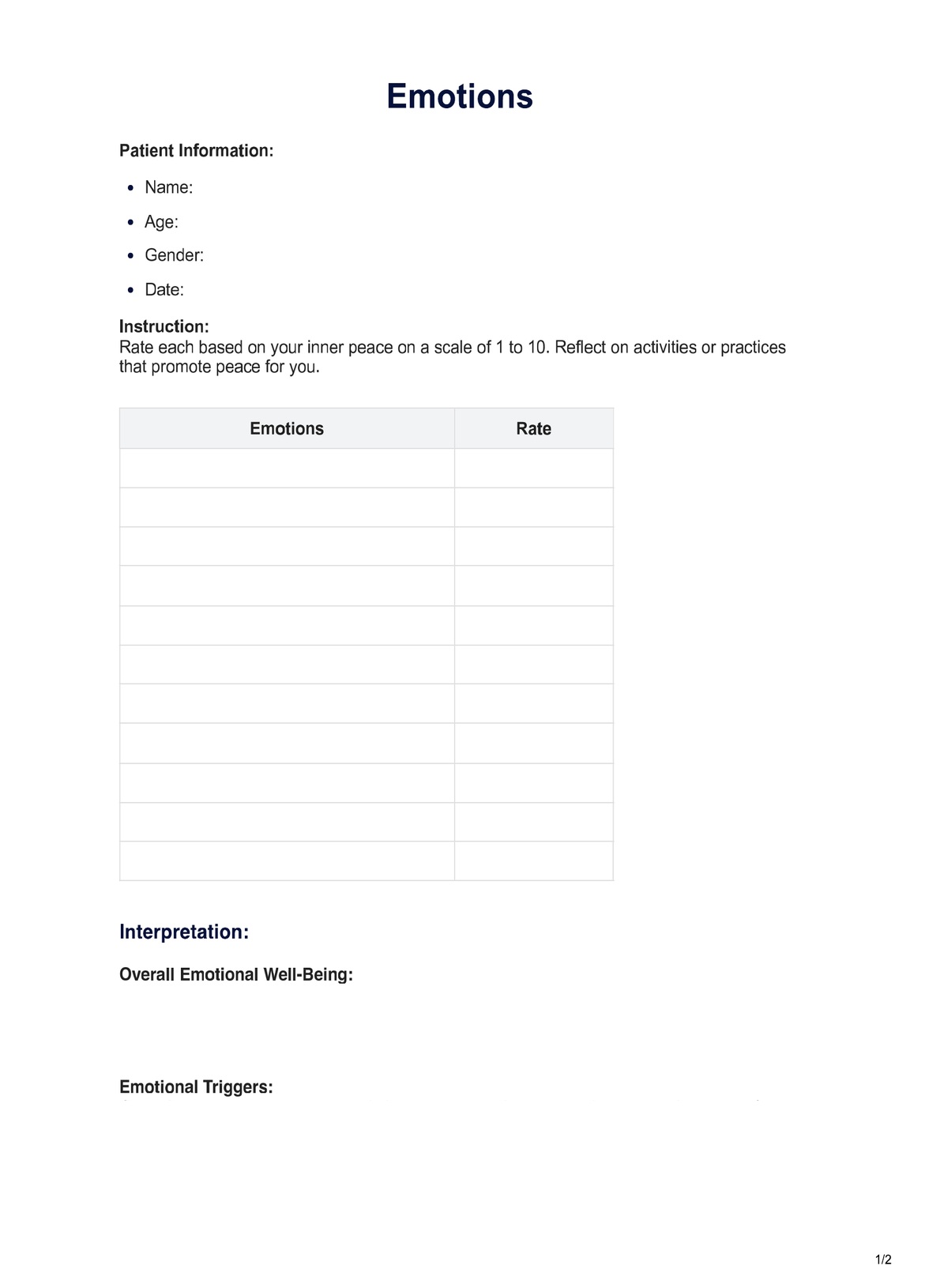
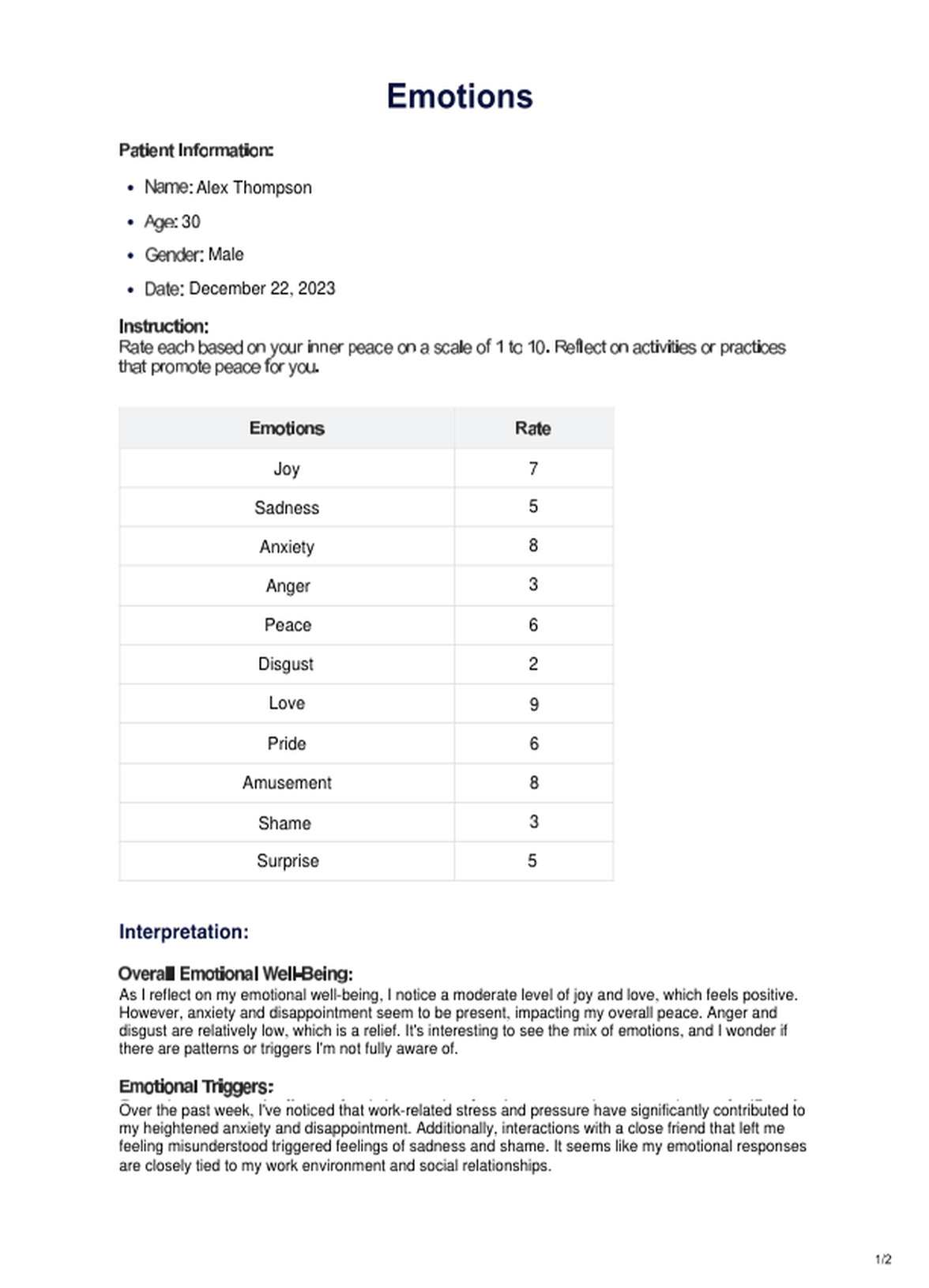

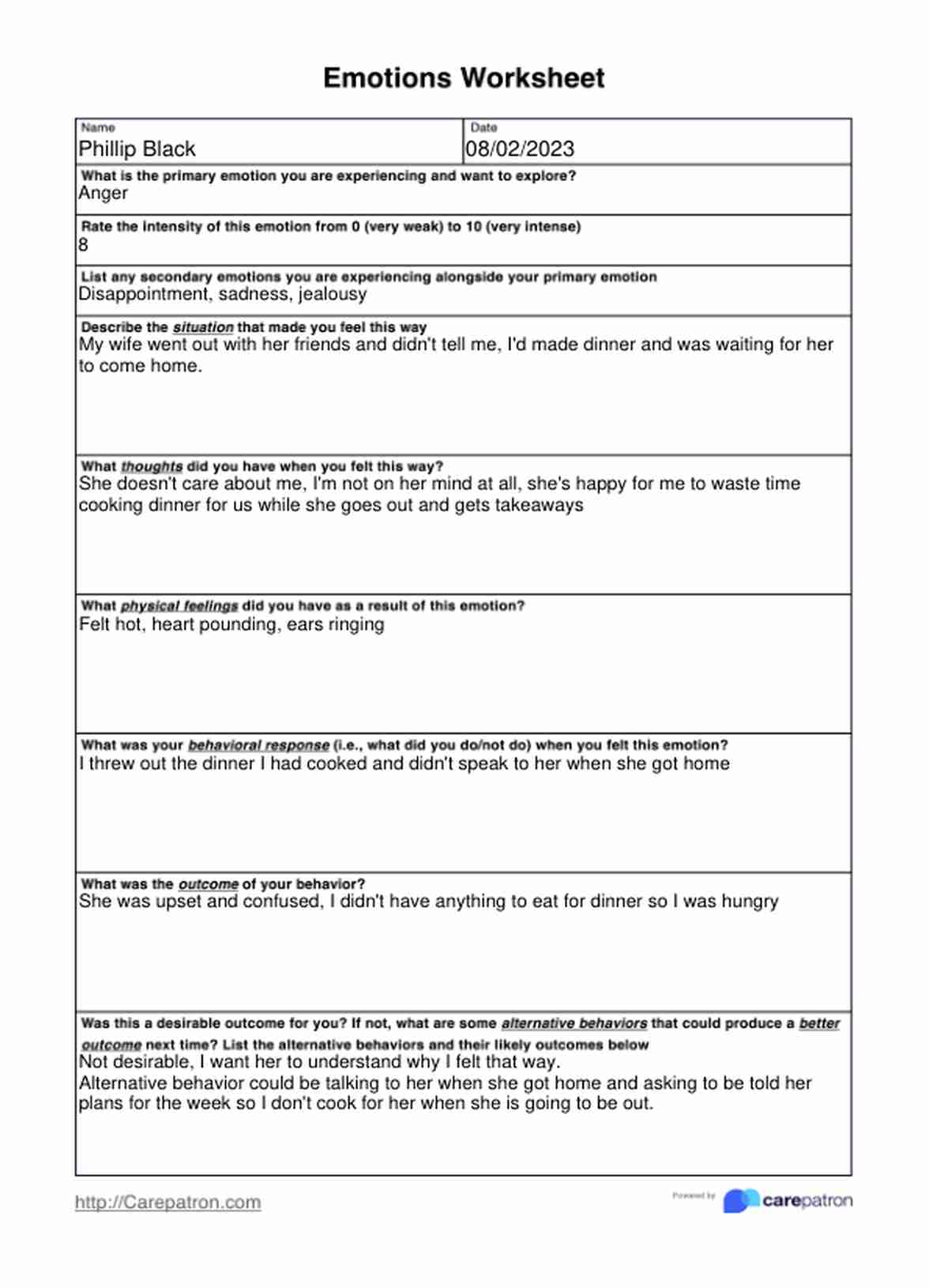
















-template.jpg)



















































































